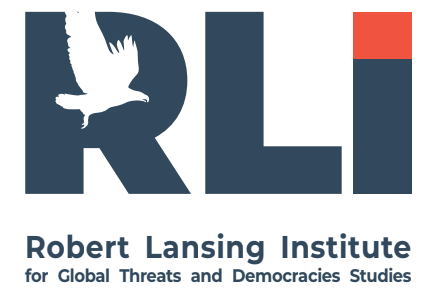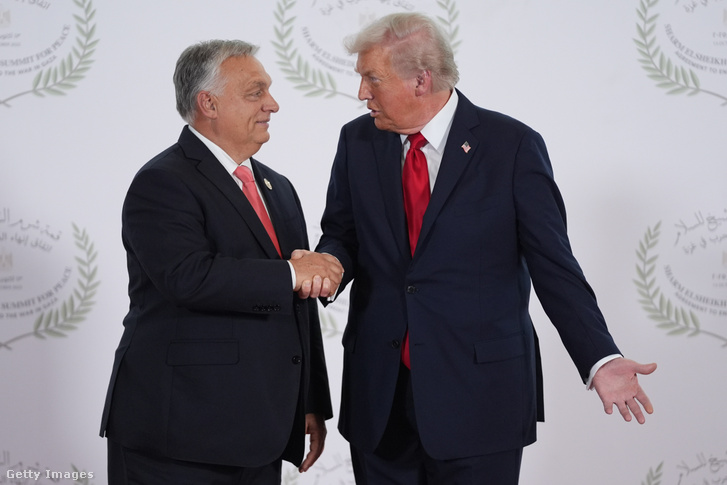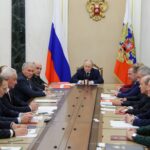President Donald Trump hosts Hungary’s PM Viktor Orbán at the White House. Official and media lines point to Russian oil sanctions, economic cooperation, and Orbán’s push to broker a Trump–Putin encounter as headline
Orbán’s aims (primary → secondary)
Energy carve-out for Russian oilSecure a U.S. exemption/waiver or political blessing that allows Hungary to keep importing Russian crude/products despite tightened U.S. measures; frame it as essential for Hungarian energy security and price stability.
Brokerage role: Trump ↔ Putin
Pitch himself as facilitator of a Trump–Putin contact/summit, elevating Budapest’s diplomatic relevance and aligning with his “peace first, sanctions later” narrative.
Bilateral economic package
Cushion Hungary from U.S.–EU trade frictions via a targeted cooperation deal and tax-treaty talks; monetize political alignment with Washington. (Precedents flagged in March 2025.)
Leverage on Ukraine questions
Signal bargaining space on Ukraine’s EU track and aid debates—trading tactical flexibility for energy concessions or political optics.
Trump team’s likely objectives
- Test EU unity on Russia sanctions via Hungary—probe whether a tailored carve-out is possible without blowback, while claiming relief for a NATO ally.
- Explore backchannel to Moscow under the rubric of “ending the war,” keeping options open for a Trump-led process.
- Package deliverables as jobs/investment or tariff offsets tied to Central Europe to show domestic gains.
Russian influence vectors (how Moscow benefits)
- Energy dependency lock-in. A U.S. nod to continued Russian oil into Hungary entrenches Rosneft/Lukoil flowsinside the EU’s internal market perimeter, weakening sanctions coherence and creating a precedent for other claimants.
- Diplomatic laundering. A Trump–Putin pathway via Orbán reframes Russia as a necessary interlocutor and normalizes engagement amid the Ukraine war—Moscow’s long-standing objective.
- EU wedge politics. Orbán’s role spotlights intra-EU splits on Ukraine’s accession and Russia policy, amplifying Kremlin narratives of a divided West.
- Narrative victory. If Washington concedes even partial flexibility on energy, Moscow touts sanctions “fatigue” and claims validation of its strategy.
Targets & audiences
- Domestic (Hungary): portray Orbán as defender of cheap energy and statesman who can talk to both Washington and Moscow—useful against economic headwinds and political opposition.
- Brussels/Berlin/Paris: pressure valves on Ukraine aid and EU enlargement; signal that U.S. may tolerate selective exceptions, encouraging EU capitals to “be pragmatic.”
- Moscow: demonstrate Budapest’s reliability; keep channels warm for future Putin contact.
- U.S. domestic: frame as energy cost relief for an ally and exploratory diplomacy toward ending the war
Likely deliverables (best-case for Orbán)
- Soft or procedural relief rather than a formal waiver: extended compliance timelines, license review language, or a “national interest” statement that signals tolerance without codifying a blanket carve-out
- Working group / tasker on Hungary–U.S. economic cooperation and energy security, with follow-ups that Budapest can sell as wins at home
- Exploratory language on U.S.–Russia contacts (not a commitment), contingent on battlefield/political conditions
Optics in Congress/NATO. Any overt greenlight to Russian oil purchases by an EU/NATO member will face criticism; expect hedged phrasing and emphasis on “temporary” or “case-by-case
- EU backlash risk. Brussels and key member states may counter with tightened EU enforcement if Hungary appears to win special treatment via Washington
- Ukraine linkage. Kyiv-aligned voices will push hard against concessions, tying them to battlefield consequences and EU enlargement politics
Indicators to watch
- Readout wording: any mention of “energy security,” “flexibility,” “case-specific licensing,” or “reviewing the impact of sanctions” flags room for a de facto carve-out
- Brokerage language: references to “contacts with Moscow,” “path to talks,” or “mutual exploratory channels” indicate traction on Orbán’s mediator pitch
- EU reactions: statements from Brussels/Berlin/Paris linking the meeting to Ukraine’s EU accession or warning against sanctions dilution
- Hungarian messaging: domestic pressers spinning “victory on Russian oil” or a “statesman” narrative around a future Trump–Putin meet
Risk matrix (impact × likelihood)
| Risk | description | Likelihood (7d) | Impact | Net |
| Sanctions softening by signal | Ambiguous U.S. language exploited by Budapest/Moscow as a de facto greenlight | Medium | High | Substantial |
| EU cohesion hit | Hungary leverages meeting to resist EU-level measures or Ukraine tracks | Medium–High | High | Severe |
| Trump–Putin channel opens | Orbán secures exploratory contact that Moscow publicizes | Low–Medium | Medium–High | Material |
| Kyiv narrative damage | Perception that West is tiring of sanctions; used by RU IO campaigns | High | Medium | High |
Sources underlying likelihoods: pre-brief coverage and official signaling on oil waivers, broker role, and EU/Ukraine linkage
analytic judgment
- Orbán arrives with a two-track ask: (1) practical relief on Russian oil; (2) political stature as a mediator to Putin. Both advance Russian strategic objectives—energy revenue continuity and normalization of engagement—while stressing EU unity. Even without formal concessions, carefully worded U.S. readouts may be enough for Budapest and Moscow to claim momentum
Domestic Risks for Trump from the Orbán Meeting
The Trump–Orbán encounter delivers short-term optics benefits for the White House, but it carries significant domestic political, institutional, and strategic risks. These risks cluster into four major categories: Congressional backlash, media narrative escalation, institutional friction, and perceived alignment with Russian interests.
1. Congressional and Bipartisan Backlash
1.1. “Pro-Russia optics” trigger bipartisan criticism
Orbán is widely viewed in Washington—across both parties—as the EU’s most pro-Kremlin leader. Hosting him prominently risks fueling Congressional accusations that Trump is:
- legitimizing a pro-Russia spoiler inside NATO,
- weakening Western unity on sanctions,
- providing a diplomatic victory indirectly benefiting Moscow.
Democrats will strike hardest, but Republican hawks (Lindsey Graham, Senate Foreign Relations members, House Armed Services, etc.) may also distance themselves.
Risk: Congress may attempt to bind the administration’s hands on sanctions via legislation.
1.2. Potential legislative retaliation
Congressional committees may respond by:
- drafting harder Russia sanctions to block any waivers Trump may consider for Hungary;
- using hearings to amplify Orbán’s authoritarian reputation;
- attaching riders that limit executive discretionary authority on energy sanctions.
Outcome: Trump’s bargaining flexibility with Hungary and Moscow becomes narrower.
U.S. Media and Public Narrative Risks
Reinforcement of the “Trump favors autocrats” storyline
Orbán is a symbol in U.S. media for:
- democratic backsliding,
- pro-Russian policy stances,
- anti-EU obstructionism.
A high-profile White House meeting gives major outlets (NYT, WP, CNN, MSNBC) ammunition to say Trump continues to elevate illiberal strongmen.
This risks:
- alienating moderates and suburban voters,
- undermining foreign-policy credibility with swing constituencies.
Framing as Trump weakening NATO
If any phrasing emerges suggesting “flexibility on sanctions” or “reviewing restrictions,” the media environment will frame this as:
- Trump accommodating Moscow through Budapest,
- “America abandoning Ukraine,”
- “NATO ally handed special favors for siding with Russia.”
This narrative will dominate the news cycle for several days.
Institutional Risks: State Department, intelligence community, and Pentagon
Internal friction with national security bureaucracy
Trump’s warm reception of Orbán risks deepening mistrust within:
- the State Department,
- the NSC staff,
- the intelligence community,
- NATO-focused sections of DoD.
These institutions overwhelmingly view Orbán’s government as:
- destabilizing EU unity,
- vulnerable to Russian and Chinese influence,
- opportunistic in Ukraine policy.
Risk: slowed implementation, morale drop, internal leakage or dissent.
Increased likelihood of internal leaks
When bureaucracies distrust the White House’s foreign-policy direction, they leak:
- Talking points
- Internal memos
- Classified assessments about Hungary–Russia channels
A meeting with Orbán—especially if the White House signals sanction flexibility—heightens leak risk dramatically.
This could produce damaging headlines like:
“Intel warned White House that Orbán coordinates with Kremlin networks.”
Russia-Related Political Exposure
Renewed accusations of Trump enabling Russian interests
Even if the meeting avoids explicit concessions, the political environment is primed to interpret it as:
- softening Russia policy,
- enabling Russian oil revenue via Hungary,
- paving the way for a Trump–Putin meeting.
In election-season U.S. politics, optics matter more than the substance.
Risk: Democrats weaponize the meeting to revive the Russia narrative.
Domestic perception of undermining Ukraine
If the meeting results in:
- any hint of sanction “flexibility,”
- talk of “negotiating with Putin,”
- references to “ending the war quickly,”
It will be framed as Trump undermining:
- Ukraine’s war effort,
- U.S. intelligence assessments,
- U.S. support for NATO allies.
This risks mobilizing Ukrainian-American, Polish-American, and Baltic-American constituencies against him in key states (PA, MI, WI).
Electoral Risks
Midwestern swing voters
States like Wisconsin, Michigan, and Pennsylvania have electorates sensitive to:
- perceptions of foreign influence,
- loyalty to Ukraine,
- national-security credibility.
Orbán is deeply unpopular with moderate U.S. voters once his Russia ties are mentioned.
Risk: marginal but real electoral erosion in key battlegrounds.
Evangelicals are split
Orbán is admired by some U.S. evangelicals for cultural conservative messaging, but others—especially young evangelicals—are uncomfortable with:
- his ties to Moscow,
- corruption cases,
- authoritarian image.
The meeting could mobilize both support and backlash within the same bloc.
The Trump–Orbán meeting is strategically beneficial for Russia, tactically useful for Orbán, and politically risky for Trump.
It carries the following domestic liabilities:
- reinforces the “pro-autocrat” and “pro-Russia” narratives;
- triggers bipartisan scrutiny in Congress;
- fuels media framing that Trump is destabilizing NATO;
- provokes internal institutional resistance;
- risks leaks that could be politically damaging.
While the administration may extract tactical benefits (energy narrative, diplomatic positioning), the domestic political cost is significant, especially in a polarized and election-sensitive environment.
Scenario Matrix: Domestic Outcomes of the Trump–Orbán Meeting
Impact on U.S. Politics, Media Environment, and Institutional Dynamics (2025)
SCENARIO 1 — “Controlled Optics” (Most Likely)
Likelihood: High
Impact: Medium
Description
The White House releases a restrained readout:
- references “energy security,”
- avoids explicit language on sanctions relief,
- frames the meeting as supporting “a NATO ally.”
No major policy shifts are announced.
Domestic Effects
- Media narrative criticizes Trump but does not explode into a major scandal.
- Congressional hawks warn against weakening Russia sanctions but stop short of legislative retaliation.
- Bureaucratic unease rises mildly; no leak cascade.
Why This Happens
Trump’s advisors impose discipline, ensuring no wording that can be interpreted as “pro-Russian.”
Net Result
Manageable political noise → moderate but non-lethal domestic cost.
SCENARIO 2 — “Narrative Contamination” (Highly Plausible)
Likelihood: Medium–High
Impact: High
Description
Small verbal concessions or ambiguous phrasing—e.g.,
- “reviewing sanctions,”
- “seeking pragmatic solutions,”
- “keeping communication channels open with all sides”—
provide enough material for U.S. media to frame the meeting as a pro-Russia tilt.
Domestic Effects
- Mainstream media headlines: “Trump Friendly to Pro-Putin Orbán.”
- Democrats revive “Russia narrative”; moderate Republicans distance themselves.
- Congress accelerates proposals for mandatory Russia sanctions.
- NSC/DoD/IC frustration increases; risk of damaging leaks grows.
Why This Happens
Orbán deliberately uses language that implies U.S. softness toward Moscow.
Net Result
Trump suffers significant narrative damage in the domestic arena, especially among moderates and national-security voters.
SCENARIO 3 — “Backchannel Exposure” (Medium Probability)
Likelihood: Medium
Impact: Very High
Description
After the meeting, leaks emerge that:
- Orbán pitched a Trump–Putin summit,
- Trump responded positively,
- or the White House is considering “flexibility” for Hungary on Russian oil.
Domestic Effects
- Media firestorm; front-page coverage for days.
- Democratic leadership opens hearings into “foreign influence” or “backchannel diplomacy.”
- Intelligence community morale fractures further; whistleblower risks rise.
- European allies voice concerns publicly → feeding U.S. domestic debate.
Why This Happens
Internal dissent inside State Department or IC leads to leaks aimed at shaping policy.
Net Result
Severe domestic blow; “Russia connection” narrative roars back, damaging Trump among swing constituencies.
SCENARIO 4 — “Policy Concession or Perceived Concession” (Low Probability)
Likelihood: Low–Medium
Impact: Extreme
Description
Trump offers Hungary:
- explicit sanctions relief,
- a formal waiver,
- or a declared path toward a Trump–Putin meeting.
Even perceived concession—even without a formal document—is enough.
Domestic Effects
- Bipartisan shock.
- Senate prepares binding legislation to block the concession.
- Media compares the event to Helsinki 2018.
- Institutional revolt: internal memos leak; former officials attack the move.
- Swing states with strong Ukrainian/Polish diasporas respond negatively.
Why This Happens
Orbán manipulates the meeting into a symbolic victory and convinces Trump it will “help end the war quickly.”
Net Result
Worst-case political damage:
Trump portrayed as actively advancing Russian interests via Hungary.
Mini-Chart: Likelihood vs Impact
| Scenario | Likelihood | Impact | Net Risk |
| 1. Controlled Optics | High | Medium | Moderate |
| 2. Narrative Contamination | Medium–High | High | Severe |
| 3. Backchannel Exposure | Medium | Very High | Critical |
| 4. Policy Concession | Low–Medium | Extreme | Catastrophic |
The domestic danger lies less in policy substance and more in perception, messaging, and leaks. Orbán’s Russia ties make the meeting inherently toxic in U.S. politics. Any ambiguity or mismanaged optics can trigger high-impact scenario chains that resurrect the “Trump–Russia” narrative with force.
How Politically Dangerous Is This Meeting for Trump?
The meeting is significantly dangerous for Trump—more dangerous than it appears—because Orbán is the only NATO/EU leader widely viewed in Washington as a proxy channel for Moscow, and any perceived concession, softness, or even ambiguous phrasing will instantly revive the “Trump–Russia” narrative at full force.
Even without actual policy concessions, the optics alone carry real domestic political risk.
Orbán is toxic political capital in Washington
Inside the U.S., Orbán is framed as:
- Russia’s closest EU partner
- An opponent of Ukraine aid
- A spoiler inside NATO
- A leader who echoes Kremlin narratives
- An “anti-democratic, pro-Moscow autocrat” in U.S. media
For Trump, being photographed celebrating Orbán at the White House automatically triggers:
- negative media cycles,
- Congressional scrutiny,
- institutional discomfort,
- and renewed accusations of Russian influence.
Orbán is not a neutral foreign leader—he is politically radioactive in the U.S. environment.
The Russia angle is the biggest danger
The most potent political risk is that the meeting appears to:
- weaken sanctions on Russian oil (via Hungary)
- facilitate a path to Trump–Putin contact
- reward Moscow’s closest EU ally
- undermine Ukraine
These narratives are explosive in U.S. domestic politics.
Even hints of sanction relief or openness to “communication with all sides” will be weaponized by opponents.
This is the single most dangerous vector.
The risk comes not from policy, but from perception
Trump doesn’t need to give Orbán anything concrete for the meeting to be politically damaging.
The danger lies in:
- ambiguous phrasing in the readout
- leaks from State, NSC, or intel officers
- Orbán bragging at home about “American flexibility”
- media framing that Trump is “appeasing Moscow through Budapest”
Because the Russia narrative is deeply entrenched in U.S. politics, even a low-information stimulus reignites it.
Institutional backlash increases the fire
The U.S. foreign-policy bureaucracy is overwhelmingly hostile to Orbán.
As a result:
- internal leaks become more likely,
- dissenting officials may go public,
- agencies may slow-roll Trump’s directives,
- analysts may privately brief Congress against the White House line.
This bureaucratic resistance amplifies the political danger—because leaks often shape U.S. media narratives.
Trump’s electoral coalition is not unified on Orbán
Supporters:
Older evangelicals and far-right media adore Orbán’s culture-war message.
Skeptical blocs:
- national-security conservatives
- defense-establishment Republicans
- Ukrainian-American and Polish-American voters in critical swing states
- moderates in suburbs (WI, PA, MI)
Orbán divides Trump’s coalition—this makes the domestic cost heavier.
The worst-case scenario (politically catastrophic)
The most dangerous outcome is:
- Orbán tells Hungarian press he obtained “flexibility” on Russian oil
- A U.S. official leaks that Orbán pitched a Trump–Putin meeting
- Media frames the entire event as “Trump helping Russia through Hungary”
This would dominate U.S. headlines for a week and severely undermine Trump’s foreign-policy credibility.
Final Judgment: Political Danger Level
Overall Risk to Trump: HIGH
(Equivalent to Scenario 2–3 in intelligence calibration)
Because this meeting touches the most politically sensitive vulnerability Trump has: his perceived relationship with Russia, and Orbán is—inside U.S. politics—the least defensible interlocutor from the EU/NATO orbit.
10-Line Danger Summary: Trump–Orbán Meeting
- Orbán is viewed in Washington as Moscow’s closest ally inside NATO, making him politically radioactive.
- Any perceived concession—especially on Russian oil—will be weaponized as proof of Trump “helping Putin.”
- The meeting risks reviving the full Russia narrative, Trump’s most vulnerable domestic political flank.
- Ambiguous phrasing in the readout could trigger media escalation within minutes.
- Anti-Russia hawks in both parties may push binding sanctions legislation to counter Trump’s flexibility.
- State Department, NSC, and IC elements may leak internal concerns, amplifying public controversy.
- The optics of hosting an “illiberal,” pro-Kremlin figure will alienate moderates and security conservatives.
- Ukrainian- and Polish-American constituencies in key swing states may view the meeting as a betrayal of Ukraine.
- Orbán may exaggerate U.S. “concessions” for domestic gain, creating damaging narratives Trump cannot control.
Net assessment: The meeting poses high domestic political risk, with potential for rapid escalation if messaging is mishandled.
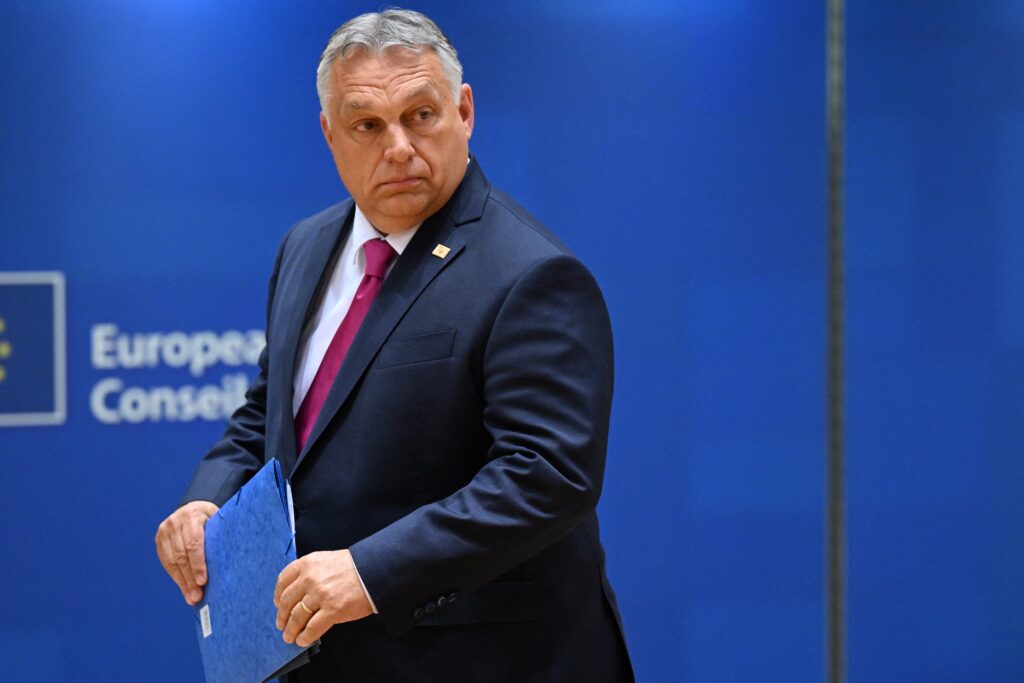
More on this story: Hungary’s Espionage Against EU Institutions:
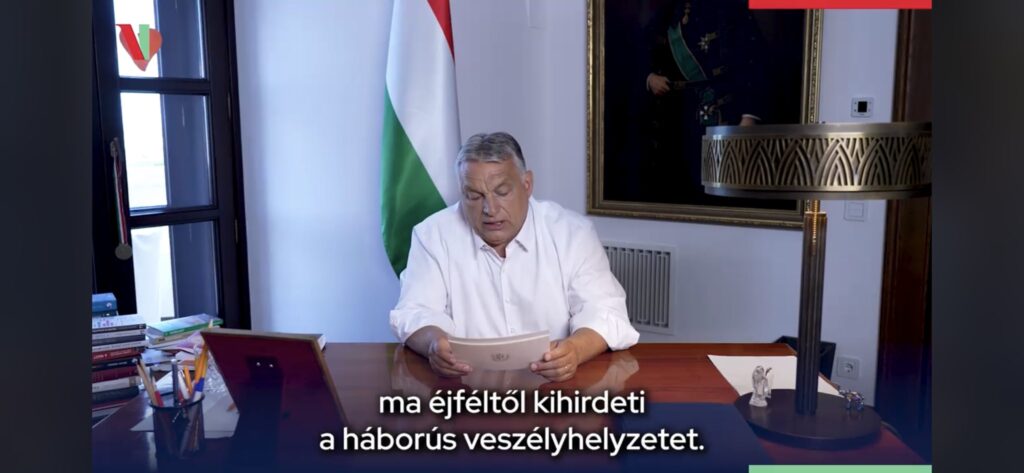
More on this story: Hungary’s Balancing Act: Strategic Risks of Budapest’s Covert Ties with Russia
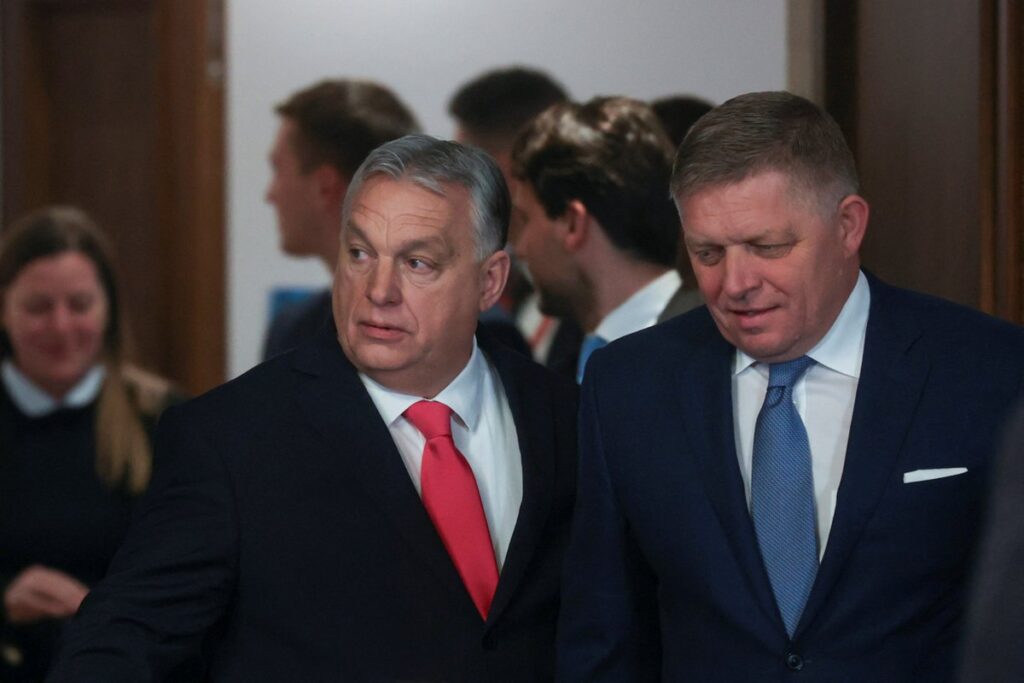
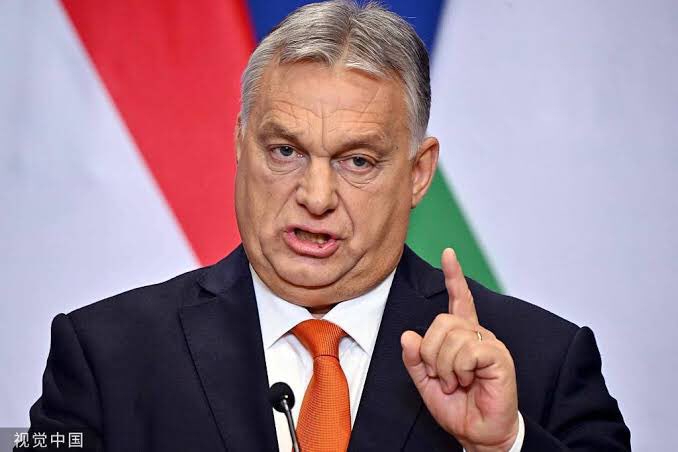
More on this story: “Viktor Orbán’s Russian Alignment: A Threat from Within the European Union”

More n this story: Hungary: Trojan Horse in Russia’s Proxy War Against Europe
